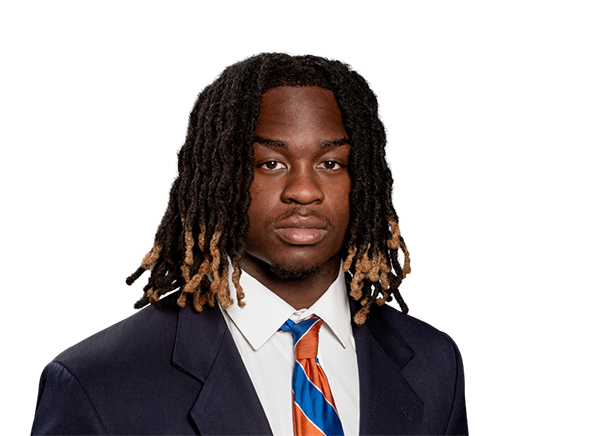The 2023 rookie class has been taking shape for the past few months. While this class was highly anticipated, some of the excitement has reduced recently. With a weaker WR class and some lackluster combine performances, some are not feeling as confident in this class as before.
But one positional group that has not lost any hype is the tight ends. After a few years of having shallow TE classes, the 2023 class is a welcome addition to fantasy leagues. The tight end position can give owners a distinct positional advantage, and many hope they can find the next stud in 2023.
But what goes into a prospect becoming a great NFL tight end? Is the 2023 class the right class to bet on? What should we be expecting in the total crapshoot that is hunting for elite tight ends?
Background
The tight end position has been the most top-heavy group in fantasy for some time now. A plethora of wide receivers and running backs can always help your fantasy teams. Even the quarterbacks have a group of premier guys in the double digits.
But a truly elite tight end is hard to come by and should be valued as such. For context, in the last five seasons, there have only been nine tight end seasons of over 200 fantasy points in half-point PPR. Travis Kelce owns five of those nine seasons. Zach Ertz, George Kittle, Darren Waller, and Mark Andrews all have one each.
In that same five-year span, only two more seasons totaled over 180 points on the year, and only seven more seasons were 170 points or more. So, Kelce has scored 200-plus points all these years, and, on average, only two other tight ends have even scored 170 in that same season.
An advantage like this is absolutely enormous in fantasy. The top three tight ends are scoring 80-90 points more per season than the tight ends that finish TE10, TE11, and TE12.
Identifying Elite TE Prospects
Elite tight ends are game-changers for any fantasy owner. That is clear. Water is wet.
But what does the process look like for identifying these tight ends? How can we go about finding the next guy in the process? Who should we highlight as a player to draft in the 2023 class?
Well, this is where things get difficult. Having one of these elite tight ends on your roster is rare. Because there are so few of them, they are not the most obvious prospects.
Let’s look at five tight ends: Rob Gronkowski, Zach Ertz, Travis Kelce, George Kittle, and Mark Andrews. The reason we are looking at these five is simple. They are the only tight ends in the last ten years that have repeatedly finished as a top-three tight end. Ten years and only five names.
So what do their rookie profiles look like? Was there a way to predict this production coming into the NFL?
Draft Capital and Combine Numbers
Rob Gronkowski was an intriguing prospect all the way back in the 2010 NFL draft. He was ultimately selected as the 42nd overall pick early in the second round by the New England Patriots. He had a 4.68 40 time in the combine and a 33.5-inch vertical jump.
Zach Ertz was the highest drafted of any of these five players. He was selected in the early second round with the 35th overall pick. He had a 4.76 40-yard dash (the slowest 40 of these tight ends) and a 35.5-inch vertical jump.
Kelce was the 63rd overall pick in the 2013 NFL draft. Going to the Chiefs, Kelce entered the league after posting a 4.61 40 and a 35-inch vertical.
George Kittle was the biggest dark horse success, falling to pick 146 in the fifth round of the 2017 NFL draft. He was the fastest of our four tight end samples with a 4.52 40-time and jumped 35 inches in the vertical test.
Lastly, Mark Andrews was the 86th pick during the third round of the 2018 draft. His 4.67 40 was slower than Kelce and Kittle, and his 31-inch vertical was easily the lowest of all four tight ends.
Meanwhile, in this same span, 11 other tight ends were all drafted in the first round of the NFL draft, with higher capital than any of our five elite tight ends. These tight ends are Jermaine Gresham, Kyle Rudolph, Coby Fleener, Tyler Eifert, Eric Ebron, OJ Howard, Evan Engram, David Njoku, Hayden Hurst, TJ Hockenson, and Kyle Pitts.
How can we improve our chances for elite TEs?
The five players that went on to become elite tight ends in fantasy were anything but easy to predict. Gronkowski and Ertz were the second tight ends taken in 2010 and 2013. But Kelce was fifth, Kittle was ninth, and Andrews was fourth of the tight ends taken in their respective drafts.
The tight end position is drafted for different reasons. Some teams value the blocking a tight end can give. You get an extra lineman for your offense that can break out for a route around the goal line. Others look for tight ends that can be an additional receiving threat and a mismatch for linebackers and nickel backs.
But looking at these picks, it appears the NFL doesn’t have a full grip on scouting premier offensive tight ends. Hall-of-fame talents end up being mid-round picks. Game changers come into the league with little or no hype.
What can we do to try to improve our odds? First, identify the tight ends that go to a good system or have a quarterback that values the tight end position. Gronkowski and Kelce have benefitted from playing under Bill Belichick and Andy Reid and having quarterbacks like Tom Brady, Alex Smith, and Patrick Mahomes throwing to them.
But the best thing you can do is put bullets in the chamber. Stock up youth whenever you can at the tight end position, especially in later rounds.
Late Round Picks
I found some interesting things in the data I pulled for tight ends. One of the most interesting is that our choices as a community to draft a tight end highly has not yielded great results.
I pulled data back to 2013 for every tight end with an ADP in the first four rounds of their rookie draft. In those ten seasons, we have a collection of 49 tight ends that were drafted between 2013 and last year. Of those 49, 15 were drafted in the first 20 picks of their rookie draft. Those 15 tight ends combined for 77 seasons of fantasy football.
Only one season out of those 77 resulted in a top-three TE finish (Hockenson’s 22).
Ertz (ADP 21), Kelce (ADP 28), Jordan Reed (ADP 38), Andrews (ADP 42), Darren Waller (ADP 43), and Kittle (ADP 46) were all taken outside the top-20 picks in their rookie drafts during this period. Yet, they account for 16 seasons of top-3 tight end production over the last ten years.
Going further, in the last ten years, the tight ends with a top-20 ADP from 2013 to 2022 combined for only five top-six seasons (Engram ’17 and ’22, Ebron ’18, Hockenson ’20 and ’22). Tight ends with an ADP later than 20 accounts for 25 top-6 seasons.
After that, names like Dalton Schultz, Taysom Hill, and Robert Tonyan, who were taken later than an ADP of 48, make the list a few times. Everyone else in the top six was drafted before 2013.
Here’s a look at the careers of the tight ends drafted in rounds one and two since 2013:

This is a pretty limited amount of success for having 20 different tight ends with capital in the first two rounds. Ertz and Hockenson make up seven of the ten top-six seasons.
Meanwhile, here is the tight ends drafted in rounds three and four:

Kelce and Kittle are almost exclusively why this group has higher numbers. But rounds three and four tight ends make up 20 top-6 seasons and 14 top-3 seasons.
What Does All This Mean?
So what can we conclude from all of this? Unfortunately, there isn’t an excellent method for identifying the next elite tight end. Many have tried. Many players have come along that are supposed to be the next great tight end. But the ones who have succeeded have been impossible to predict.
But that brings me to the important lesson: do not invest significant draft capital in tight ends in your rookie drafts. Six tight ends have been drafted with an ADP in the first round in the last ten years. They have combined for one top-three season and only three top-six seasons.
This draft capital should be invested elsewhere; at running back, wide receiver, or quarterback. The chances of success are vastly higher in these position groups.
But that doesn’t mean you should never draft a tight end. We have seen successful tight ends come out of the later rounds. These picks are a small investment in value and can make a huge profit. The likelihood is still small, but it is also a low chance a back, receiver, or quarterback pans out in the third or fourth round.
Taking shots, and a lot of them, at tight ends in the later rounds is your best chance at finding the next elite guy without investing too much in finding one. Being active in the waiver wire is always a great tactic as well.
But as far as thinking you can scout the next great tight end or find a pattern in the metrics, you are playing a losing game. Tight ends are a total crapshoot.
Did you hear the big news? The Dynasty Nerds YouTube channel is up and running. Now you can see the podcast straight from NerdHQ!! Smash that subscribe button. Sign up for the DynastyGM tool to keep that edge over your league mates. Manage all of your dynasty teams, use the trade calculator, and we just added a player shares tool so you can see all players you roster in one place.

















